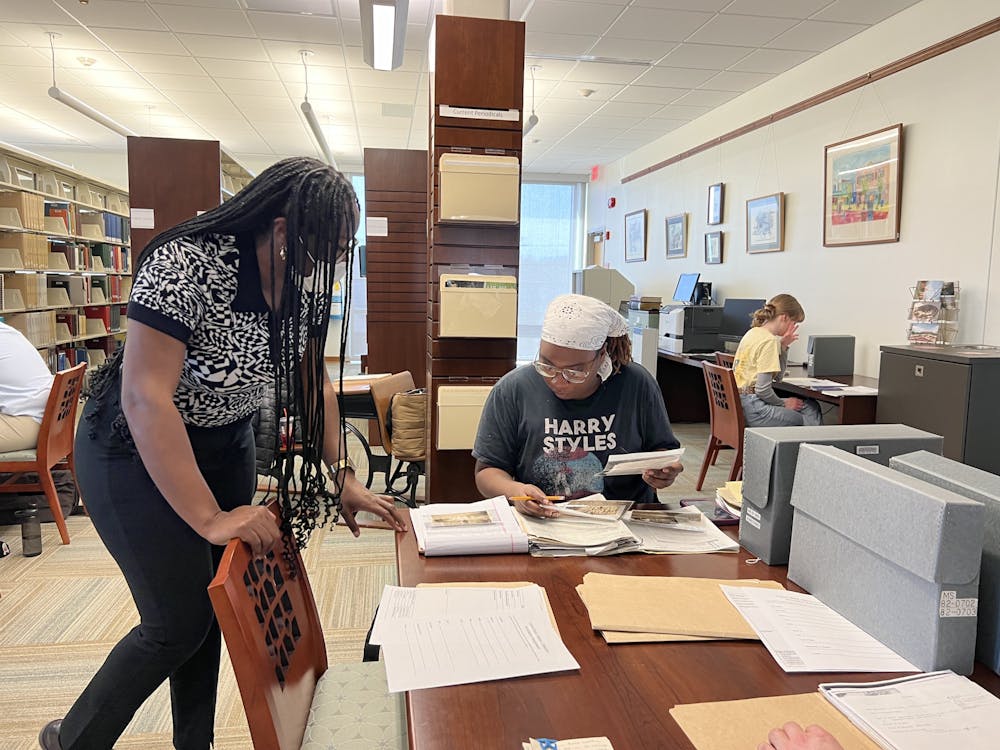In Fall 2009, the Miami University honors program discontinued any scholarships specifically linked with membership in the program. The lack of financial incentive has the potential to affect both enrollment and retention in the honors program.
So how are they keeping the program afloat after stripping honors students of their scholarships?
Two events that coincided with the financial restructuring were a complete overhaul of the university honors program requirements as well as the adoption of a new marketing initiative. The marketing campaign has certainly been a factor in the increasing enrollment numbers, but the jury is still out on how the new requirements will retain students. With the inaugural honors class under the new curriculum finishing its sophomore year, both the administration and students are figuring out the best way to proceed.
Requirement revision
In the new honors program, effective Fall 2009, the curriculum requirements were revised to better reflect the goals of the program.
"I think they want to achieve liberal education, but give you more free reign to learn from different angles," said sophomore honors student Maggie Striebich.
Students in the new honors program do not have to complete traditional Miami Plan courses. Instead, students learn and develop through their own personalized coursework and experiences.
"It's not that it's a better plan. It's just a different one," said Associate Director of Enrollment Management for the University Honors Program, Kristy Burton.
Honors students are now required to complete an e-portfolio and nine honors experiences before they graduate. Qualifying experiences run the gambit from honors classes to extra curriculars or study abroad.
"It plays to your strengths and weaknesses," Striebich said.
The E-portfolio is a compilation of reflection essays that detail a student's learning experiences that is reviewed annually by a university faculty member. It is divided into different learning outcomes that increase in complexity from tier one to three.
Enjoy what you're reading?
Signup for our newsletter
In order to graduate, honors students are required to fulfill all tier 1 and 2 learning outcomes as well as attempt tier 3 objectives. Taylor says each requirement is meant to encourage self-reflection and ultimately enhance student development throughout the undergraduate experience at Miami.
The previous program
The honors program used to consist of a basic checklist of requirements, that still applies to current juniors, seniors and fifth-years who are members of the old program.
Taylor said honors administrators felt these requirements were not actively achieving the program goals, which was the main reason behind the program revision.
"We emphasized the importance of these (honors) courses," Taylor said, "but we didn't really know what (students) were learning."
The old program requires students to complete 10 honors experiences, which are categorized to reflect different types of learning. Category A experiences are academically focused, while Category B experiences aim to incorporate out-of-class learning.
"It was all really easy," senior honors student Matt Ciccone said. "And my internships counted for category B."
The highest level of achievement in this program is the optional completion of an honors thesis project. Students are only required to submit a proposal and do not have to follow through with actually completing a thesis project.
Effects on Retention
Under the old program, retention rates were relatively high. The honors class of 2012 has retained 88 percent of its students and the class of 2011 has retained 90 percent according to retention statistics from Taylor.
Burton, along with others, were concerned students would only participate in the honors program because of the scholarship incentives. When the university proposed a new scholarship system based on merit and did away with the previous honors scholarships, the honors program applauded the move.
"We definitely supported the new scholarships," Burton said. "We knew we had students who felt obligated."
Burton said honors administrators felt that it was a bad idea to link financial incentives to the honors program because it would make students feel forced to enroll and maintain membership throughout their four years. Before the changes took place, admitted honors students automatically received a $2,000 scholarship.
The only scholarship that still exists specifically pertaining to the Honors Program is the Harrison Scholarship, which covers tuition costs for a select number of students.
The class of 2013, however, was hit the hardest. They were unable to receive honors program scholarships or the new merit scholarships offered through the university.
As the class of 2013 finishes their sophomore year, it is still not clear if the new program alone will be enough to maintain retention rates in the long run.
In the short run, however, the numbers suggest that it will. From their first year to the second, the Class of 2013 retained 96 percent of students in the honors program, according to Taylor.
The high retention rate could stem from revision of the program's grade point average (GPA) requirement.
The old program has a hard and fast rule that students must maintain a 3.5 GPA to remain in the program or they are removed. Now, students are not automatically removed from the program if they don't meet the 3.5 cumulative GPA requirement.
If the student does not achieve the desired GPA, they will simply not receive honors notation on their transcript, but can still claim honors on a resume.
"I don't think you can get kicked out," said Striebich about enforcement of the GPA requirement.
With one less cause for removal in the new framework, retention rates could remain at a high level. Taylor said the second year is a pivotal year for students and that retention statistics in the fall will be more telling.
"The second year is when we want students to decide," Taylor said. "We are still in the process of calculating retention."
Personalized marketing plan
With a leading incentive for membership in the honors program gone, honors administrators also needed to rethink how it attracts students to enroll.
In 2008, the University Honors program paired with Xerox and b+p+t communications to begin using a direct marketing plan to target prospective students. The 2008-2009 academic year was experimental. The results were promising and after making a few changes, the university honors program fully implemented direct marketing into the 2009-2010 recruitment campaign.
"We now have a class that has been through the first two years," Burton said. "When we first launched (the program) we had no examples."
Honors students are recruited to serve as honors ambassadors. The ambassadors are required to contact 20-25 prospective students at least four times through four different types of media and host an overnight recruiting event.
The personalized recruitment proved successful and the number of applications increased by 12 percent in 2009 and has increased by 4 percent each year since. This year, the honors program received a total of 1,806 applications by the February 1 deadline, according to admissions statistics from Taylor.
While the new marketing plan has proven to be a beneficial change, it may take some time for the curriculum changes to prove themselves. Honors administrators hope this new program can stand on its own without the support of a scholarship as it continues to market a developing program to new students.
"I think about that literally everyday," Burton said.



